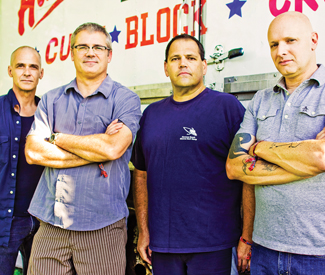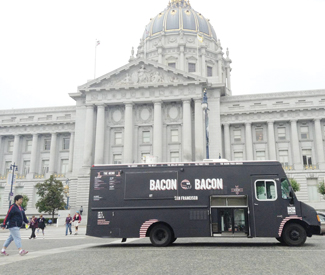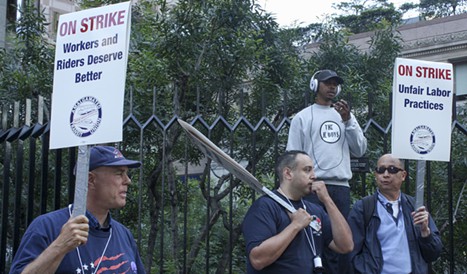news@sfbg.com
A whopping 8 percent of the population is colorblind. This not only means that approximately 26 million people in the United States have never seen the subtle color variation of a sunset, but that many of the motorists on our roadways are following traffic signs based on memorization of light placement.
So far, options to offset color vision deficiency, or CVD, have been limited. Most work-arounds use single filters of solid red or purple hues to provide a contrast. That allows those with CVD to detect differences in color, but not without a heavy red or purple saturation over everything they see.
EnChroma, a small, Berkeley-based company, has now created a product that allows wearers with CVD to see full, untinted colors — and it all happened quite accidentally during an Ultimate Frisbee tournament.
EnChroma Vice President Dr. Don McPherson, an avid Frisbee fan, first came up with the idea for CVD-offsetting glasses while creating safety eyewear for laser surgeries. The glasses being provided surgeons at the time were, as McPherson puts it, “terrible. They distorted the vision so much that surgeons would learn to adapt [during operations] based on the morphology,” much like CVD-afflicted drivers with the shape of stop signs. That’s not the most reassuring thought.
So McPherson and Bay Glass Research, his company at the time, created a thousand-dollar pair of protective glasses with filters designed for the exact formula of the laser wavelengths. This gave the wearer what he calls “true color” and “heightened confidence” during surgeries.
“But [the surgeons] kept stealing the eyewear and using them as sunglasses,” explained McPhereson. “So I started wearing them [outside the lab].”
McPhereson noticed his color vision improve in the sunshine with the laser surgery eyewear. But he didn’t realize their full potential until, while warming up with a color blind friend before an Ultimate Frisbee tournament in Santa Cruz, his friend exclaimed that with the glasses he could see the field’s orange cones so brightly they looked “fluorescent.”
An inspired McPherson wrangled a National Institute of Health grant and recruited mathematician Andrew Schmeder to create one of the most comprehensive mappings of the human ocular system in the world using the computer modeling program Mathmatica.
After countless clinical tests held at their Berkeley laboratory, McPhereson and Schmeder created the Super Color Enhancing (SCE) lenses used in their CVD glasses. The lenses have a microns-thick layer of more than 100 different filters laid atop each other in what’s called a dielectric stack. This allows for precise wavelengths of light, determined to the decimal by the computerized model, to be filtered through to the wearer.
“You might not see anything right away if you have really strong color vision deficiency,” Schmeder noted. In clinical trials, those who worked in graphic design fields or anywhere that required one with CVD to overcome absent colors, it took up to days of wearing the SCE lenses before noticing color.
“Most people with color blindness have learned to deal with it in such a way that they question what we can bring to them,” said EnChroma Marketing head Kat Dykes.
But the SCE sunglasses, which retail for $600, offer much more than just color vision to wearers on sunny days. The glasses can actually retrain your brain over time to see color more intricately.
“It’s like if you’re a chef and you go to culinary school, your senses of taste and smell get better” explained McPherson, who says he has “super color vision” after wearing the Enchroma lenses for the last 10 years.
Additionally, the SCE lenses have allowed CVD wearers to now “think” with a full color palate like a multi-linguist dreaming in a foreign tongue. “When I think of an apple, I see something red in my brain,” a patient told McPherson. “He’d never seen red before and now he’s thinking with it.”
By the end of the year, EnChroma will release pediatric lenses made of durable trivex, not glass as they’ve been producing so far. This will present an opportunity to examine color correction in the human eye from a young age as well as expand the rather skeletal collection of eyewear produced by the Berkeley company.
Right now EnChroma has their two types of adult SCE glasses (for the most prominent conditions of colorblindness), SCE glasses for those with normal vision (no one on staff at EnChroma is actually colorblind), and extreme solar protection glasses which not only enhance colors, but keep ultraviolet and blue light from damaging the eyeballs. www.enchroma.com





